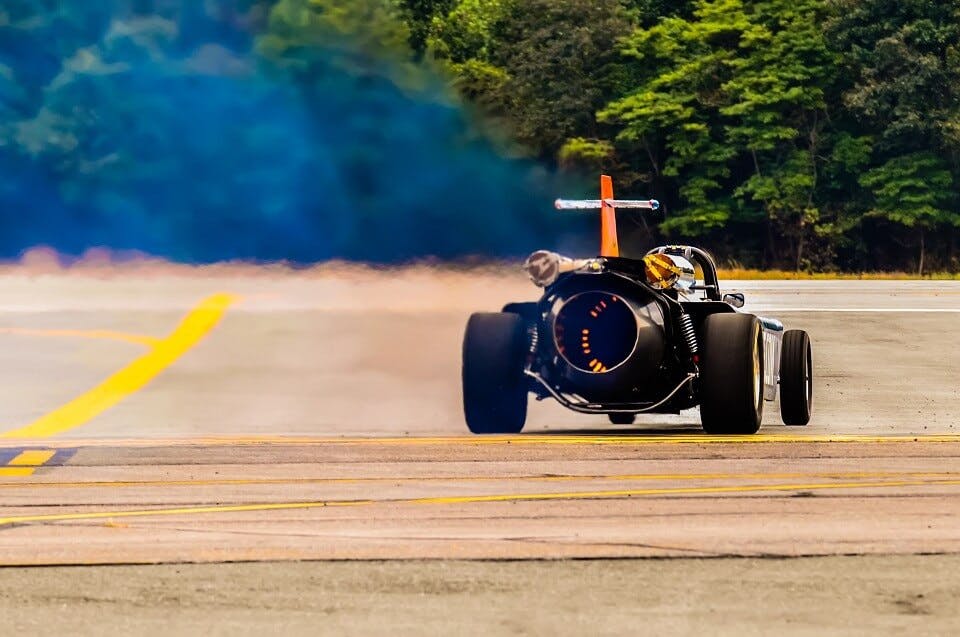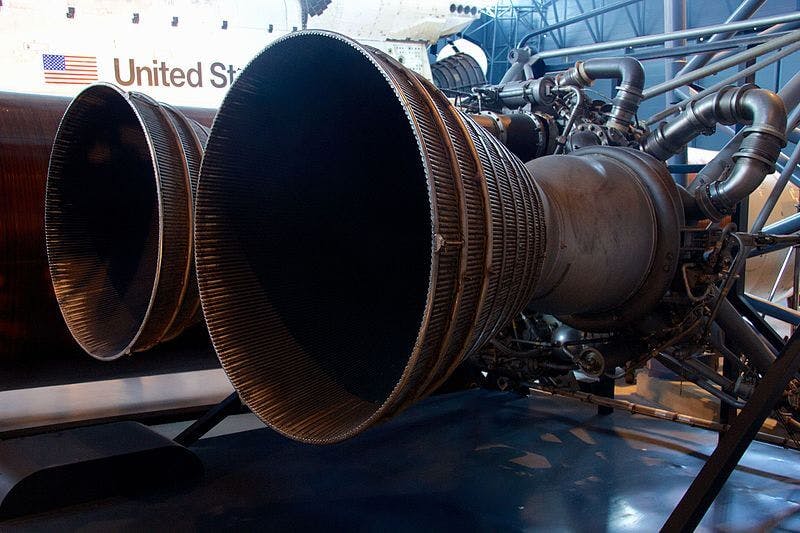Reaction engine: Did you know what type of engine it is?

A reaction engine is a type of combustion engine that uses the reactive effect of the substance exiting the engine to move it in the opposite direction (law of action and reaction).
This article will briefly examine how a reaction engine works, its history, and possible types.
Inhoudsopgave
The history of the reaction engine in a nutshell
The first foundations for the realization of reaction engines were brought in 1903 by Konstantin Eduardovich Tsiolkovsky. Subsequently, in 1915, he created a rocket scheme, the principle of which is still used today. However, reaction engines only gained attention in the years between the World Wars, with the Germans, Americans, and Russians paying the most attention to them.
In Germany, after the first tests with powder rocket engines, the designers decided to start tests with liquid rocket engines. The first successful test was carried out in 1925 on a reaction rocket engine mounted on an Opel car, which reached a speed of 238 km/h, which was unheard of at the time. All these trials and experiments led to the creation of the German rocket program.
However, reaction engines achieved the greatest boom during the Second World War. The greatest advances in the development of reaction engines were achieved during the war. On top of that, modern rocket engines were also constructed that powered the V1 and V2 ballistic missiles. These engines were built in Germany.
Based on German research from the Second World War, other reaction engine projects were implemented in the following years after the war. After the Second World War, the race to reach space and the arms race began. Many German scientists were invited to the US to work on the Apollo space program in exchange for a pardon for war crimes.
Today, the reaction engine is the basis for most aircraft and space technology propulsion. Among the most modern reaction engines today, we can include thrust engines with the supersonic internal flow, ion rocket engines, and laser reaction engines.
Reaction engines and their types:
- Rocket engine
- Reaction engine
- Thrust engine
- Pulse engine
- Hydrojet engine
- Ion engine
We can include reaction or rocket engines among the most frequently used reaction engines.
Rocket engine:
A rocket engine is a reactive engine whose operation is not influenced by the external environment, thanks to the fact that it carries fuel and an oxidizer in its reservoir. A rocket engine works on the principle of action and reaction. Combustion of the working substance produces flue gases, which leave the engine outlet nozzle at high speed.

Rocket engine: What type of combustion engine is it?
The reaction effect of the exhaust thus acts on the engine with force in the opposite direction and thus also on the machine connected to the engine. Simply put, the machine to which this engine is attached is driven in the opposite direction that the exhaust gases leave the engine discharge nozzle.
Because this engine carries its energy source, it can also work in outer space (vacuum). Today, the most widely used rocket engines are powered by solid or liquid fuel.
Jet engine:
A jet engine is a type of reaction engine that is primarily used in aviation. This type of engine works on the principle of action and reaction, just like a rocket engine, which means that the exhaust gases coming out of the engine exert a force in the opposite direction on the engine, thus propelling it forward.
In the front part of the jet engine, there is an inlet device through which air is transported into the engine, which is sucked in and compressed by a compressor. After compression, the air is heated and travels to the combustion chamber, where fuel is injected.
After the mixture is ignited, thermal energy and hot gases are released, which exit the combustion chamber and spin the turbine at the rear of the engine. This creates high pressure behind the turbine, converting thermal energy into kinetic energy, which creates engine thrust.
Thrust engine:
The thrust engine is structurally the simplest type of reaction engine. This engine type consists of a narrowed and open tube at both ends. Air enters the engine by thrust during flight. When entering the engine, the air slows down, increasing its pressure.
Fuel is then injected into the compressed air. Combustion of the mixture creates high temperature and pressure, and the exhaust gases begin to leave the engine through the narrowed outlet, which propels the engine forward.
Pulse engine:
A pulse engine is a reactive engine that uses the resonant frequencies of the gas in the exit nozzle to work. There is a diffuser in the front, inlet part of the air intake for the engine. A mixing chamber is behind the diffuser, adding fuel to the air stream.
This mixture travels to the combustion chamber, which is separated from the mixing chamber by valves. After igniting the mixture in the combustion chamber, gases flow into the engine nozzle, which ensures its forward drive. The pulsation engine was first used serially in the German V-1 rockets during the Second World War.
Ion engine:
Like a rocket engine, the ion engine carries its energy source on board. However, unlike a rocket engine, an ion engine works on an electrical principle.
Even though the reaction engine is not used to drive cars, there are, or rather, a few crazy people who equipped their cars with this engine. Some of them even won the ironic Darwin Prize.
The reaction engine and the Darwin Award:
The Darwin Prize is the prize for the most curious death caused by human stupidity. So it's a kind of ironic award for people who have contributed to improving the human gene pool by removing themselves from it voluntarily and through their stupidity.
One Darwin Award went to a guy named Wile E. Coyote, who one fine day decided to install a rocket engine (JATO rocket) on his Chevy Impala. These rockets serve overloaded cargo planes to take off from a very short area. For comparison, six such rockets will allow a 70-ton plane to take off on an area as long as a football field. But what can one such rocket do with a car weighing approximately 2 tons, and why not try it out?
Once the rocket was mounted on the roof of the Impala, the guy decided to find a long enough stretch of highway in the Arizona desert. After searching for a while, he came across a three-mile stretch without a single turn. It was located at the end of this section. So the guinea pig got into the car and lit the rocket without thinking.
The police found the place of the fire very easily because there was no asphalt on the road. After all, the heat from the engine had melted it. After five seconds, when the rocket developed its maximum thrust, the guy was already rushing with his Impala at a speed of 560 km/h and constantly accelerating.
The rocket's full thrust drove the car further, and when it became clear that the selected section of the highway was too short, the car driver decided to start braking. However, this failed as both the tires and brakes burned, and the Impala became airborne, the rocket propelling it further and further.
The car driver became a pilot who crashed into a rock at a height of 38 meters. It was located at the end of a three-mile straight. Upon their arrival, the police found a meter-deep crater in the rock into which the unfortunate man had crashed, and only a few bones, teeth, and nails were embedded in the steering wheel found on a crash site.